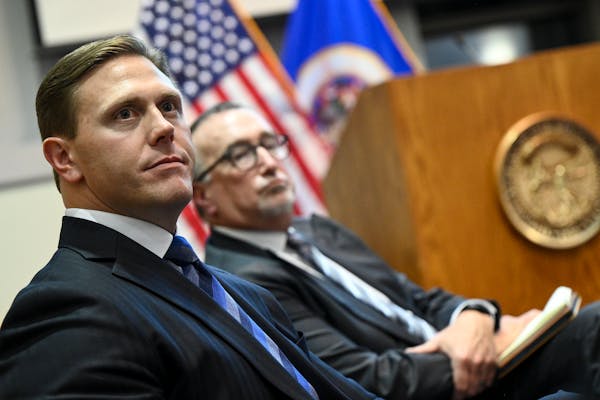The barbarians are no longer at the gate of the University of Minnesota's health system, but its problems remain — and so does its need for taxpayer help.
The attempt by South Dakota-based Sanford Health to merge with Twin Cities-based Fairview Health Services, the U's longtime health system affiliate, exposed bitter conflict between the U and Fairview — and a deeper sense within the U that its medical school and hospitals aren't in the market position that leaders desire.
The merger has been called off. Sanford's board ended it Thursday citing a lack of support from "certain stakeholders," which was an indirect way of saying the U.
That's a relief for university and state leaders, who are trying to figure out what to do about the U's medical system and have had their backs against the wall because of the prospective merger.
But they shouldn't slow down.
The revelation from this now-failed business deal is that the U's medical system is not where it should be as American hospitals begin to face the biggest health care challenge they've ever seen: old-age care for the nation's largest-ever generation, the baby boomers.
In January, just a few weeks after Sanford and Fairview revealed the merger, university officials announced their opposition to it because it conflicted with their vision — which had not been previously revealed — to build a new $1 billion hospital on the Twin Cities campus.
They then rallied bipartisan support at the Legislature — including lobbying by former governors Tim Pawlenty, a Republican, and Mark Dayton, a Democrat — for taxpayer funds of around $950 million to repurchase the U's teaching hospital and others that were sold to Fairview in the 1990s.
Lawmakers also approved a bill giving the state attorney general a greater say in health care-related mergers in Minnesota. Attorney General Keith Ellison did not sit on his hands, however. He conducted meetings around the state that put Fairview and Sanford executives in front of the public, spotlighting pros and cons for a deal.
An attempt by Sanford and Fairview to merge in 2013 fell apart when then-Attorney General Lori Swanson and several key lawmakers painted Sanford as essentially run by its chief benefactor, billionaire Denny Sanford, who is a U grad and longtime donor but also a conservative firebrand.
In this go-round, there was less public criticism of Sanford the man, but state officials and civic leaders privately worried about his influence. His image was dented in recent years by a child pornography investigation that led to no charges.
Sanford, now in his late 80s, plays no role in the operations of Sanford Health and said nothing publicly about the merger. Sanford Health executives, as part of their effort to persuade Minnesota officials of the company's financial strength, said that Sanford had pledged to leave the bulk of his estate to the health system.
With Sanford Health and Sanford the billionaire now out of the picture, however, the U and Fairview still have to decide what to do about a relationship that's clearly on the rocks.
The whole episode showed that not only did they disagree about a future with Sanford, but that the structure of their partnership, including the ownership of assets and their cross-payments, is broken.
But university and state officials — with the help of business and health care leaders — must address a deeper question: Should the U run the best and most important health care system in Minnesota?
That's the way things are in Iowa and Wisconsin and with some other universities in the Big Ten and around the country.
But not all. There are many different models for university health systems.
And within Minnesota is Mayo Clinic, a health care universe unto itself. Meanwhile, the Twin Cities has a handful of multi-hospital systems that compete with the U for high levels of care and staff.
The U of M system could be at the mountaintop, working with all the state's medical systems and a secondary or tertiary destination for patients with very difficult health issues. But with so many other fine hospitals nearby, that may not work.
Myron Frans, the U's senior vice president of finance who is taking the lead on this matter, earlier this year told me that the U's medical system as a kind of Switzerland to the state's hospitals doesn't pencil out.
"We need to have a dedicated community system" to affiliate with, Frans said. "We need those patients. We need those opportunities for our doctors' practice and nurses. We could go it alone, but that's kind of hard."
While a merger of Sanford Health and Fairview is no longer forcing the question about the future of the U's medical system, there's still an urgent need to answer it.

Ramstad: Minnesota demographer takes deeper look at migration, workforce pressure
Ramstad: Health care is a tough arena for AI to make a difference
Ramstad: Misinterpreting data led me to the wrong conclusion about Minnesota retirees
Ramstad: How Rochester is keeping its housing growth on track


